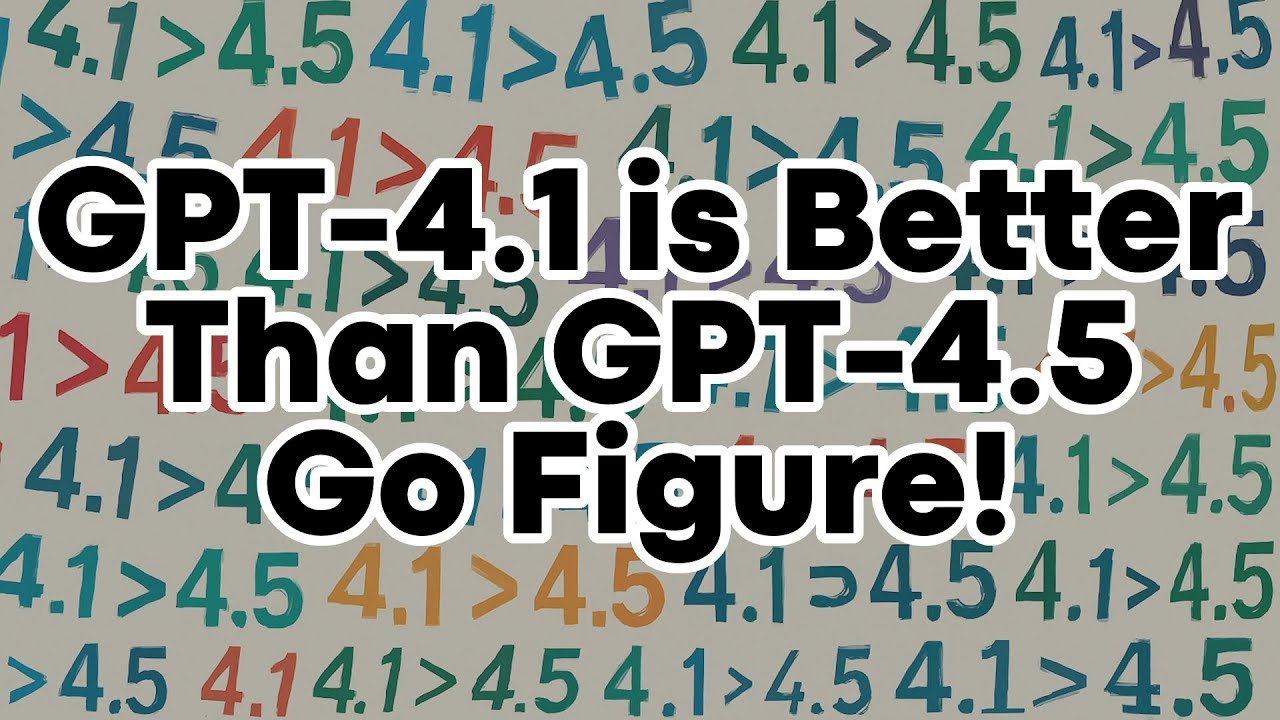The video discusses the recent introduction of GPT-4.1 by OpenAI, which surprisingly outperforms GPT-4.5 in several areas while being more efficient and cost-effective, although it is currently only accessible via API. Demonstrations highlight GPT-4.1’s strengths in coding and handling complex queries, while also noting its limitations in certain tasks compared to GPT-4.5.
In the recent announcement from OpenAI, GPT-4.1 has been introduced, creating some confusion in the AI community as it follows the release of GPT-4.5. The video explains that these models are developed through extensive research and training, with GPT-4.1 emerging from a different branch than GPT-4.5. Interestingly, GPT-4.1 has shown to outperform GPT-4.5 in several areas, leading to humorous remarks from OpenAI about their naming conventions. The expectation is that future models, like GPT-5, will streamline this naming process.
The video highlights that GPT-4.1 is not only more efficient but also cheaper to run compared to GPT-4.5. OpenAI has focused on optimizing the performance of GPT-4.1 while reducing operational costs, making it more accessible for users. Currently, GPT-4.1 is available only through an API, which requires programming knowledge to access, unlike the more user-friendly ChatGPT web interface. The presenter emphasizes the importance of this cost-effectiveness for both OpenAI and its users.
Benchmarks provided by OpenAI indicate that GPT-4.1 excels in coding tasks, outperforming both GPT-4.5 and earlier models. For instance, in coding benchmarks, GPT-4.1 scored significantly higher, demonstrating its capability in programming-related queries. Additionally, it maintains strong performance across various tasks, including handling long context prompts and answering questions about charts and scientific papers. However, it does not lead in every benchmark, particularly in instruction-following tasks, where GPT-4.5 still holds an edge.
The video includes a demonstration of GPT-4.1’s capabilities using a command-line tool to access the model via Python. The presenter tests the model with various questions, including logical puzzles and programming tasks. While GPT-4.1 successfully answers many of the questions, it struggles with more complex problems, such as the hourglass question, indicating that while it performs well, it is not infallible. The model also shows proficiency in generating code and interpreting images, showcasing its versatility.
In conclusion, GPT-4.1 emerges as a strong contender in the AI landscape, offering comparable performance to GPT-4.5 at a lower cost. The video encourages viewers to consider the implications of this new model and its potential applications. As OpenAI continues to develop its models, the presenter invites feedback and thoughts from the audience, emphasizing the ongoing evolution of AI technology and its accessibility for users.
